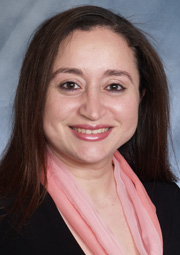 UT physicists and ORNL engineers collaborations lead to a new apparatus design for high temperature (up to 950 °C) quasi-elastic neutron scattering in a controlled gaseous environment.
UT physicists and ORNL engineers collaborations lead to a new apparatus design for high temperature (up to 950 °C) quasi-elastic neutron scattering in a controlled gaseous environment.
Amal al-Wahish is a former student in Dr. David Mandrus‘ research group in the department of Material Science and Engineering. Her doctoral dissertation studied Phosphate Proton Conductors at elevated temperature using Quasi-Elastic Neutron Scattering. The operation of these proton conductors needs a sample environment running at temperatures exceeding 300 °C. At that time, the available sample environment for experiments at Backscattering Spectrometer Spallation Neutron Scattering could only accommodate temperatures well below that.
Amal had two choices: to either change her dissertation topic or design and build a new apparatus. She took up the challenge of building the apparatus. Working together with a brilliant ORNL staff (D. Armitage, N. Jalarvo , B. Hill, and R. Mills), the apparatus was built in 2011 and has been in use since that time at ORNL for the purpose of conducting quasi-elastic neutron scattering studies. It is a versatile system capable of studying neutron dynamics in situ under operational conditions similar to solid oxide fuel cells with the ability to control humid and dry gas flow under various environmental conditions and over a wide range of temperatures reaching up to 950 °C, enabling the user to measure chemical, dynamical and physical changes in situ.
The setup has proven especially effective in studies of high temperature Quasi-elastic neutron scattering, where it reveals information about microscopic scale under dry and humid conditions, but the apparatus can potentially be used in many different neutron experiments with suitable sample can material.
In Fall 2015, Amal al-Wahish, David Mandrus, and their colleagues at ORNL and Berry college published an article in the journal Review of Scientific Instruments (Vol.86, Issue 9) with the title “A new apparatus design for high temperature (up to 950 °C) quasi-elastic neutron scattering in a controlled gaseous environment.”
The team included Amal al-Wahish, D. Armitage, U. al-Binni, B. Hill, R. Mills, N. Jalarvo, L. Santodonato, K. W. Herwig, and D. Mandrus.